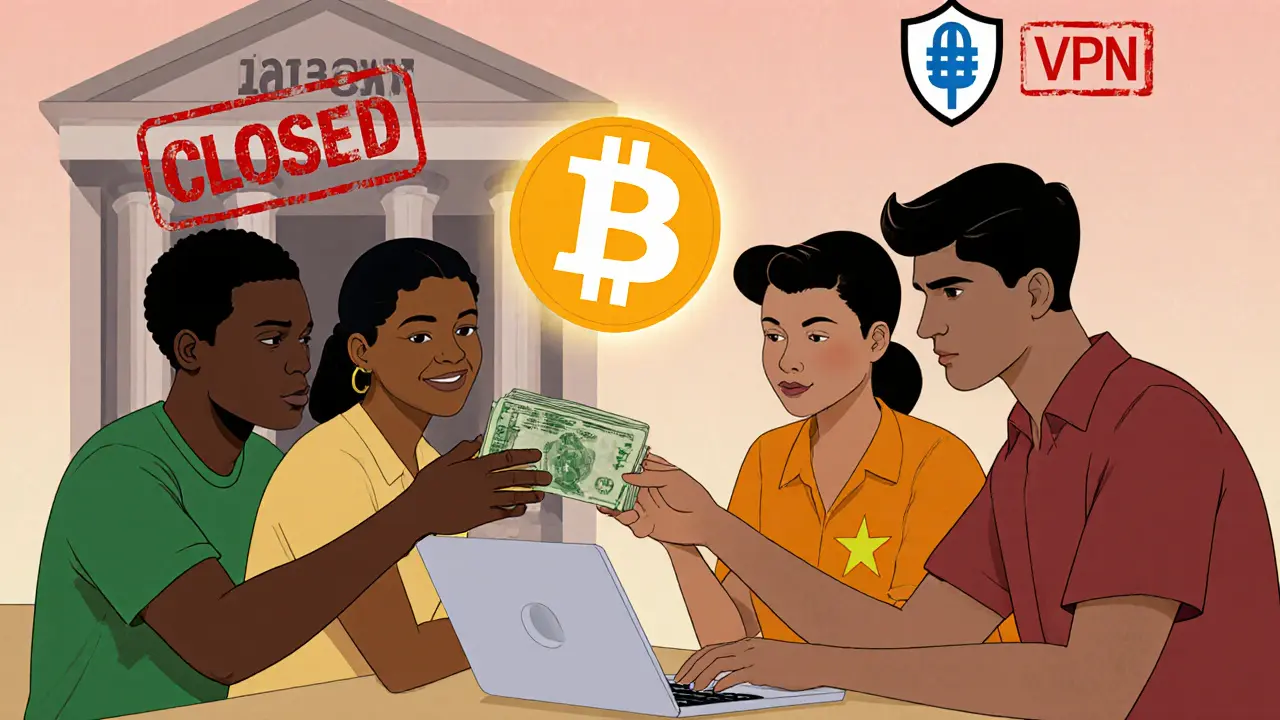P2P Crypto: How Peer-to-Peer Trading Works and Why It’s Growing Fast
When you trade P2P crypto, a system where people buy and sell cryptocurrency directly with each other, without intermediaries like exchanges. Also known as peer-to-peer crypto trading, it’s the backbone of crypto access in countries where banks block crypto purchases. This isn’t theory—it’s how someone in Tunisia buys USDT with cash, how a trader in Nigeria bypasses banking limits, or how a student in Vietnam pays for crypto using mobile money.
P2P crypto relies on platforms like Binance P2P, a major peer-to-peer trading network that connects buyers and sellers globally and local apps that match users by payment method. You pick a seller, agree on price, send money via bank transfer, PayPal, or even cash, and get crypto in your wallet. No KYC. No middleman. No delays. But it’s not risk-free. Scammers fake payment screenshots. Some sellers vanish after you send money. And in places like Tunisia, you could face legal trouble—yet people still do it because inflation is worse than arrest.
What makes P2P crypto different from regular exchanges? It’s about control. You’re not trusting a company to hold your funds. You’re trusting a person. That’s why tools like escrow services and reputation ratings matter. Platforms that support crypto without banks, a way to transact in digital assets without needing a traditional financial institution are booming in regions with unstable currencies or strict capital controls. In Nigeria, where banks shut down crypto accounts, P2P trading became the only way to preserve savings. In Argentina, people use it to dodge devaluation. Even in India, traders use it to avoid the 1% TDS tax on exchange trades.
The rise of P2P crypto isn’t accidental. It’s a response to regulation, censorship, and distrust. When governments impose taxes, bans, or exchange licensing rules, people find ways around them. That’s why you’ll find posts here about underground trading in Tunisia, why Binance P2P is mentioned in multiple country-specific guides, and why platforms like FutureX Pro—claiming to be a "no KYC exchange"—are scams pretending to be P2P. Real P2P doesn’t promise anonymity through fake licenses. It’s just two people making a deal.
What you’ll find below are real stories from people using P2P crypto in the wild. From how they avoid scams to how they navigate legal gray zones. You’ll see why some think it’s the future of money, and why others call it a dangerous gamble. There’s no fluff. Just what works, what fails, and who’s really behind the trades.

How Citizens in Banking-Restricted Countries Access Crypto Exchanges
Despite banking bans and legal risks, citizens in countries like Nigeria, Vietnam, and Iran are using P2P trading, VPNs, and no-KYC exchanges to access crypto. Here’s how they do it - and what it really costs.
© 2025. All rights reserved.